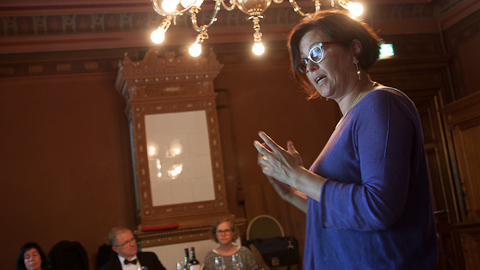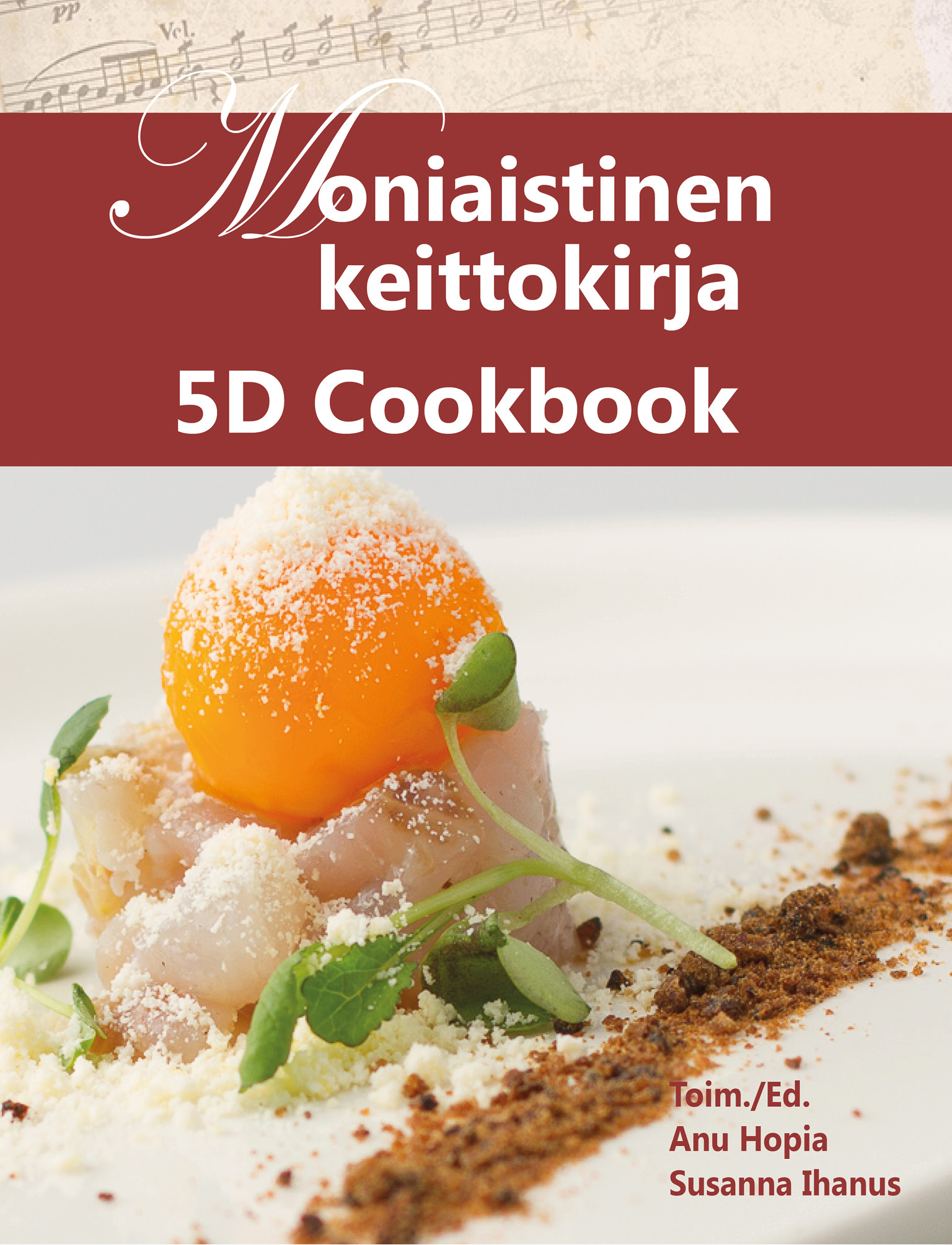5D Cookbook Offers a Taste to All the Senses
What we call as the taste of the food is a combined interaction of multiple senses in our brain. The Functional Foods Forum (FFF) at the University of Turku has published the online, digital 5D Cookbook which is available to everyone. With the cookbook, people can experience how the different senses affect our food experience.

The Cookbook edited by Anu Hopia (on the right) and Susanna Ihanus is available online and can be freely downloaded. Also Mari Sandell (left), Seppo Salminen and Emmi Harju took part in writing the book.
The digital 5D Cookbook is edited by Professor Anu Hopia and Project Manager Susanna Ihanus and it is available both in Finnish and English. The cookbook can be read with tablets and computers on the University of Turku webpages and at www.5Dcookbook.fi. The publication is free of charge and free to use.
by Professor Anu Hopia and Project Manager Susanna Ihanus and it is available both in Finnish and English. The cookbook can be read with tablets and computers on the University of Turku webpages and at www.5Dcookbook.fi. The publication is free of charge and free to use.
– 5D Cookbook was created to remind us about the joys of food. That we enjoy it with all our five senses. We form an idea about the taste already during the first tens of milliseconds when the visual message reaches the brain. Also sense of touch and hearing are part of the food experience alongside with the familiar senses regarding food, taste and smell, says Professor Anu Hopia from the Functional Foods Forum at the University of Turku.
5D Cookbook is a unique book even on a worldwide scale, which, in addition to the recipes, contains the scientific and artistic fruits of the KUMURU project directed by the University of Turku.
– What we call as the taste of food is in fact a multisensory interaction inside our brain. This interesting blend of sensory perception has been approached from different perspectives in the KUMURU project at the South Ostrobothnia. Multisensory 5D Cookbook is a small selection of recipes from the KUMURU journey of tastes, says Project Manager Susanna Ihanus.
of food is in fact a multisensory interaction inside our brain. This interesting blend of sensory perception has been approached from different perspectives in the KUMURU project at the South Ostrobothnia. Multisensory 5D Cookbook is a small selection of recipes from the KUMURU journey of tastes, says Project Manager Susanna Ihanus.
The purpose of the three-year KUMURU – Culture, Music and Food – project was to produce new research and event models and to encourage companies to develop new business about the themes of the project. The partners in cooperation included, among others, chefs, restaurant proprietors, students, universities, researchers from Finland, United Kingdom, Argentina and Norway as well as artist from five different countries.
Cookbook for an Experimenter
5D Cookbook serves those who are widely interested in the characteristics of food. For example, the cookbook gives instruction on how to make a 68°C egg or how to make a mock apple pie, that is, a pie which tastes like apples without a single wedge of the fruit. Or the reader can test if they can combine different foods – cinnamon rolls, homemade cheese, oven pancakes and rusks – with the music that was composed to them.who are widely interested in the characteristics of food. For example, the cookbook gives instruction on how to make a 68°C egg or how to make a mock apple pie, that is, a pie which tastes like apples without a single wedge of the fruit. Or the reader can test if they can combine different foods – cinnamon rolls, homemade cheese, oven pancakes and rusks – with the music that was composed to them.
who are widely interested in the characteristics of food. For example, the cookbook gives instruction on how to make a 68°C egg or how to make a mock apple pie, that is, a pie which tastes like apples without a single wedge of the fruit. Or the reader can test if they can combine different foods – cinnamon rolls, homemade cheese, oven pancakes and rusks – with the music that was composed to them.who are widely interested in the characteristics of food. For example, the cookbook gives instruction on how to make a 68°C egg or how to make a mock apple pie, that is, a pie which tastes like apples without a single wedge of the fruit. Or the reader can test if they can combine different foods – cinnamon rolls, homemade cheese, oven pancakes and rusks – with the music that was composed to them.
The book provides a chance to the test your own senses.
– Potato chips and properly baked baguettes are supposed to make a certain crispy sound thus enhancing their taste. Bone conduction plays a major part here. This is when sound reaches the inner ear via the bones in the head instead from eardrum via air conduction. Anyone who wishes to test this in practice might try eating something crunchy while wearing earplugs, suggests Heikki Uimonen, the Professor of Popular Music Research at Sibelius Academy.
Proved by Science
Docent at FFF and Academy Research Fellow Mari Sandell writes in the book that the sensory perception of foods deals with taste, smell, sound, structure and appearance.
– Food is full of different kinds of molecules that activate our chemical senses such as smell and taste. Both the compounds and senses interact with each other in a variety of ways. Mechanical treatment, such as chopping, cooking and other methods of preparing food alter the food’s chemical composition and thus its chemical perception and physical characteristics, says Sandell.
Charles Spence, the Professor at the Crossmodal Research Laboratory at the Oxford University, describes how hearing can change the experience about food and drink. People who participated in the research evaluated that wine was considerably more enjoyable when it was tasted while listening to suitable music than in silence.
– The results of this research demonstrated that for a number of the tastes and aromas, people were consistent in terms of the notes and instruments that they felt went especially well together. So, for example, fruity notes such as apricot, raspberry, and blackberry were all matched with higher musical notes, and with the sounds of the piano and woodwind instruments. By contrast, lower pitched musical notes were associated with the musky, woody, dark chocolate, and smoky aromas, Professor Spence reveals in the book.
>> 5D Cookbook
Text: Erja Hyytiäinen
Photos: Erja Hyytiäinen, excerpts from 5D Cookbook
Translation: Mari Ratia